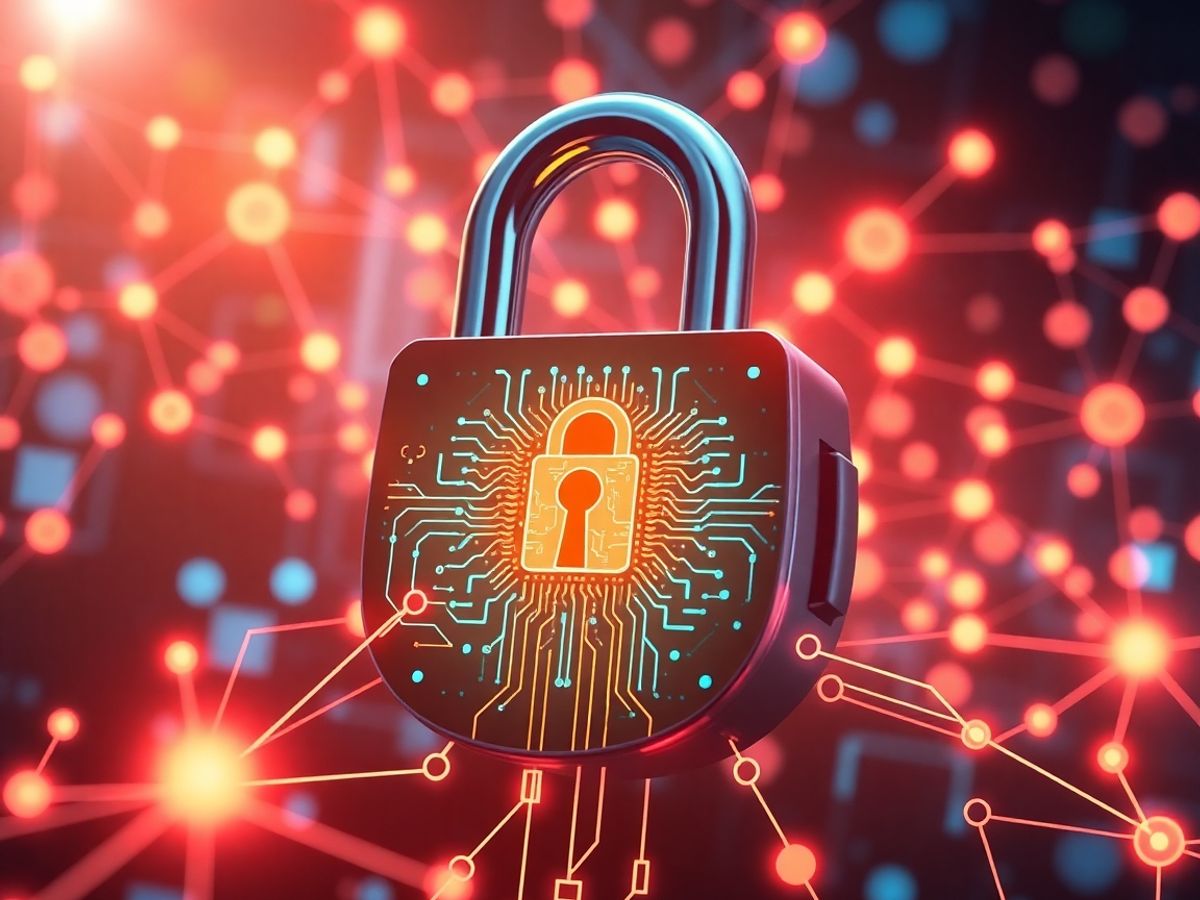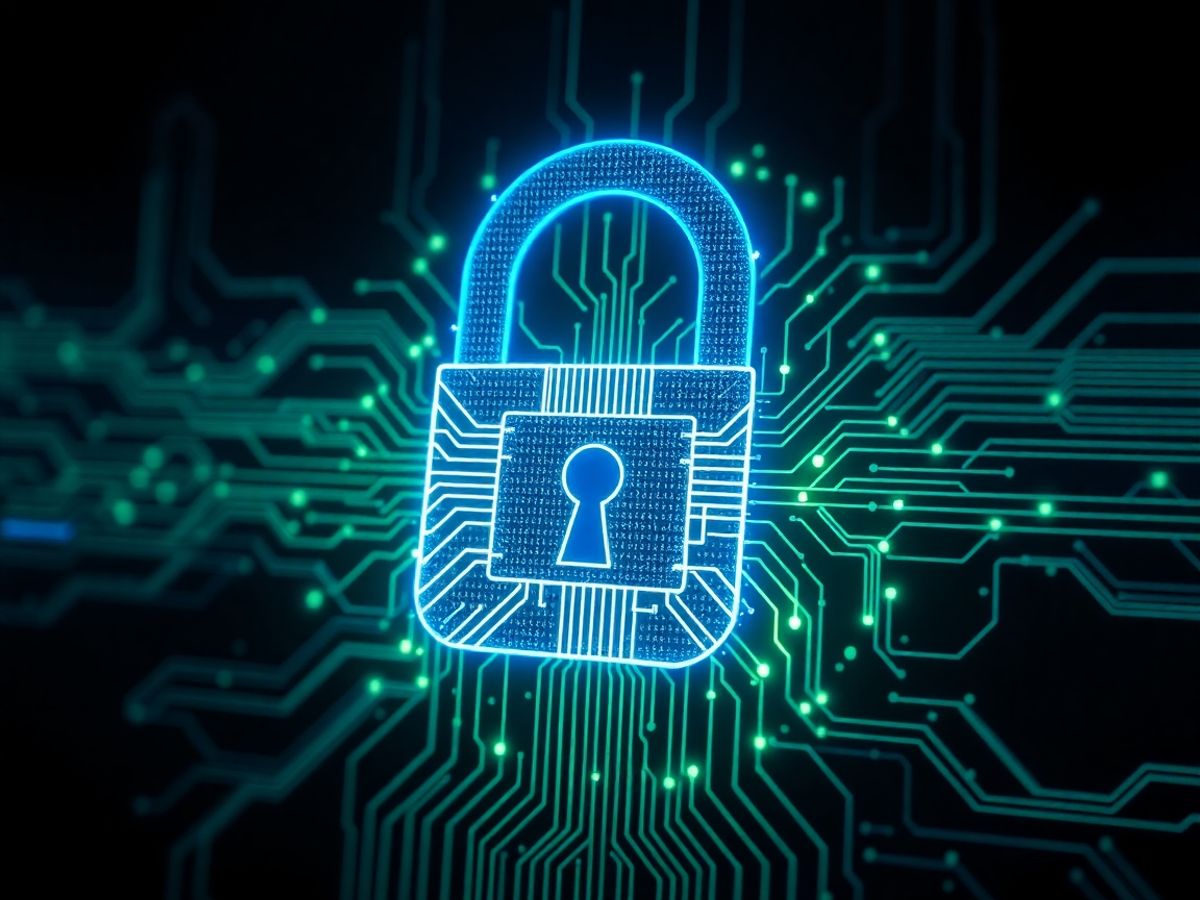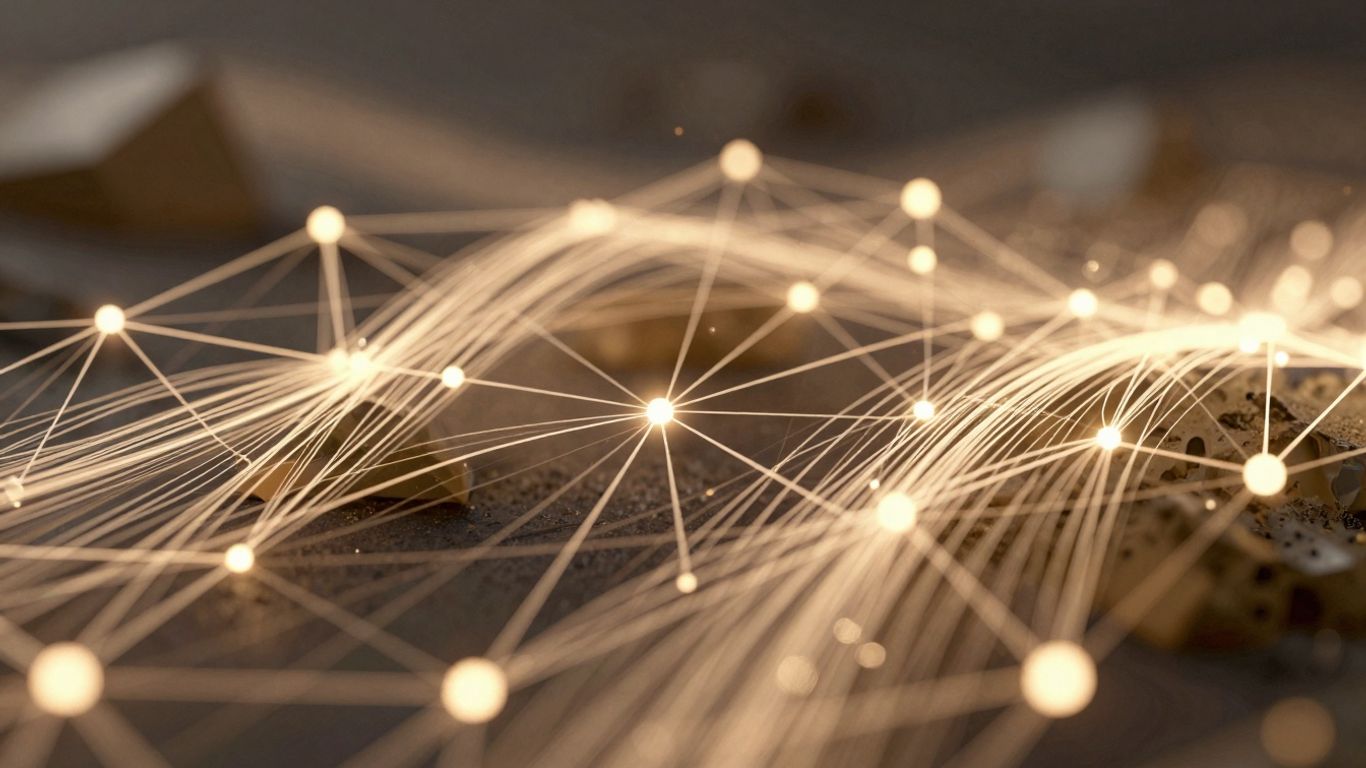[ newsletter ]
Stay ahead of Web3 threats—subscribe to our newsletter for the latest in blockchain security insights and updates.
Thank you! Your submission has been received!
Oops! Something went wrong. Please try again.
Explore how AI in decentralized security transforms data protection, enhancing cybersecurity and ethical practices.





In today's digital world, the need for robust security measures has never been more pressing. With the rise of cyber threats and data breaches, organizations are turning to innovative solutions. One such solution is the integration of artificial intelligence (AI) in decentralized security. This approach not only enhances data protection but also revolutionizes how we defend against cyber threats. By leveraging AI's capabilities, businesses can improve their security posture, streamline incident response, and better manage vulnerabilities in a decentralized environment.

AI is changing the game in cybersecurity, especially when it comes to decentralized systems. It's not just about adding fancy tech; it's about fundamentally changing how we protect data and networks. Think of it as moving from a reactive approach to a proactive one, where systems can learn, adapt, and even predict threats before they happen. It's a big shift, and it's happening now.
AI is becoming essential for real-time threat detection. Traditional methods often struggle to keep up with the speed and complexity of modern cyberattacks. AI-powered systems can sift through massive amounts of data, identify patterns, and flag suspicious activity much faster and more accurately than humans. This means potential threats can be identified and neutralized before they cause significant damage. It's like having a super-powered security guard that never sleeps and sees everything.
Finding and fixing vulnerabilities is a constant challenge. AI can help by automating much of the process. By analyzing code, system configurations, and historical attack data, AI can pinpoint weaknesses that might otherwise be missed. This allows organizations to prioritize their resources and focus on mitigating the most critical risks. It's about making vulnerability management more efficient and effective.
When a security incident occurs, time is of the essence. AI can help security teams respond more quickly and effectively. By automating incident triage, AI can prioritize alerts based on their severity and potential impact. It can also analyze threat intelligence data to identify the source of the attack and recommend appropriate countermeasures. This means faster response times, reduced damage, and improved overall security posture.
AI isn't just a tool; it's a partner in the fight against cyber threats. By augmenting human capabilities with intelligent automation, AI is helping organizations stay one step ahead of attackers and protect their valuable data and assets.
It's interesting to see how artificial intelligence and blockchain, two pretty big deals in tech right now, can actually work together. You know, AI is all about making machines think and learn, while blockchain is this super secure way to keep track of stuff. When you mix them, you get some really interesting possibilities for making things safer and more efficient. It's not always a walk in the park, but the potential is there.
Blockchain security automation is becoming a big deal. It's about using technology to protect blockchain systems without needing constant human intervention. Think of it as a way to keep data safe and stop attacks before they even happen. It's not perfect, but it's a huge step up from trying to do everything manually. Cryptography is a key component, using encryption and digital signatures to protect data and verify transactions. Consensus mechanisms, like Proof of Work or Proof of Stake, make sure everyone agrees on the state of the blockchain. Decentralization spreads control across many nodes, making the system harder to attack. These components work together to create a secure and reliable blockchain.
AI security tools are leading the way in blockchain security automation. These tools use machine learning and deep learning to spot and stop threats in real-time. AI systems can find weird activity faster than old-school methods. This includes spotting phishing attempts, fake dApps, and unauthorized access. AI tools also help with real-time threat detection. It's like having a super-smart security guard that never sleeps.
Integrating AI and blockchain isn't always smooth sailing. One big issue is data scarcity. AI needs a lot of data to learn, but blockchain data can be limited or hard to get. Also, there are ethical concerns. We need to make sure AI algorithms are fair and don't discriminate. And of course, privacy is a big deal. We need to protect sensitive information while still using AI to improve security. It's a balancing act.
It's important to remember that AI and blockchain are still relatively new technologies. There are challenges to overcome, but the potential benefits are huge. By working together, we can create a more secure and efficient future.
AI in decentralized security? Sounds great, right? But hold on, we need to talk about the ethics. It's not all sunshine and rainbows. We're handing over some serious power to algorithms, and that comes with responsibility. We need to think about how these systems are built, who they affect, and what happens when things go wrong. It's a bit of a minefield, but one we have to navigate carefully.
AI is only as good as the data it learns from. If that data reflects existing biases, the AI will amplify them. Think about it: if an AI is trained on data that mostly shows men getting loans, it might unfairly deny loans to women. This is a huge problem in decentralized finance, where the goal is often to create a more equitable system. We need to actively work to identify and eliminate bias in the data used to train AI security systems. This means carefully curating datasets, using techniques to mitigate bias, and regularly auditing the AI's decisions to ensure fairness. It's not a one-time fix; it's an ongoing process.
Here's a quick look at some common sources of bias:
Who's to blame when an AI makes a mistake? This is a tough question. If an AI security system fails to prevent a hack, who's responsible? The developers? The users? The AI itself? We need to establish clear lines of accountability for AI systems. This means having mechanisms in place to investigate failures, assign responsibility, and provide redress to those who are harmed. It also means ensuring that AI systems are auditable, so we can understand how they make decisions. Automated decision-making can be a slippery slope if we don't know how it works.
It's important to remember that AI systems are tools, and like any tool, they can be used for good or for ill. We need to make sure that we're using them responsibly and ethically.
AI thrives on data, and security AI is no exception. But collecting and analyzing data can raise serious privacy concerns. How do we ensure that personal information is protected when it's being used to train and operate AI security systems? We need to implement privacy-preserving techniques, such as anonymization and differential privacy, to minimize the risk of data breaches and privacy violations. We also need to be transparent about how data is being used and give users control over their own data. It's a balancing act between security and privacy, but one we have to get right.
Here are some key privacy considerations:
It's a wild time for AI and security, especially when you throw decentralized systems into the mix. Things are changing fast, and it's tough to keep up, but some trends are starting to become clear. Let's take a look at what's coming down the pipeline.
We're seeing some really cool stuff pop up in cyber defense. AI is becoming more proactive, not just reactive. Think about it: instead of just responding to attacks, AI can now predict them. This means better threat intelligence and faster response times. Plus, AI is helping to automate a lot of the boring, repetitive tasks that security teams used to have to do manually. This frees them up to focus on the bigger, more complex problems. For example, AI-driven predictive analytics are becoming more common, helping organizations anticipate and prevent attacks before they even happen.
Zero trust is the new buzzword, and for good reason. It's all about assuming that nothing inside or outside your network is trustworthy. This means constantly verifying users and devices before granting them access to anything. AI is playing a big role in making zero trust a reality. It can analyze user behavior, device posture, and other factors to determine whether someone should be allowed access. It's not perfect, but it's a big step up from the old "trust but verify" model.
Zero trust isn't just a product you buy; it's a mindset. It's about constantly questioning and verifying everything, and AI is helping us do that at scale.
Predictive analytics is where AI really shines. By analyzing massive amounts of data, AI can spot patterns and trends that humans would miss. This allows security teams to anticipate future attacks and take steps to prevent them. For example, AI can analyze social media data to identify potential phishing campaigns before they even launch. It can also analyze network traffic to spot anomalies that might indicate an intrusion. It's like having a crystal ball for security. The use of AI-powered threat intelligence platforms will provide organizations with actionable insights into emerging cyber threats, enabling proactive defense strategies and threat-hunting activities.
Here's a quick look at how predictive analytics is changing the game:
Decentralized Finance (DeFi) is cool, but it's also a playground for fraudsters. It's like the Wild West, but with crypto. That's where AI comes in. It's not just about spotting scams; it's about building a safer space for everyone to play in. AI can analyze tons of data super fast, which is something humans just can't do.
So, how does AI actually stop the bad guys? Here are a few ways:
Machine learning (ML) is a big part of AI-powered fraud detection. ML algorithms can be trained to recognize different types of fraud and adapt to new threats as they emerge. Here's how it works:
AI is not a silver bullet, but it's a powerful tool for fighting fraud in DeFi. It can help organizations detect and prevent fraud more effectively than traditional methods. However, it's important to remember that AI is only as good as the data it's trained on. If the data is biased or incomplete, the AI will not be effective.
One of the biggest challenges in using AI for fraud detection in DeFi is data scarcity. There's just not as much data available as there is in traditional finance. Also, the data is often imbalanced, with far more legitimate transactions than fraudulent ones. This can make it difficult to train accurate ML models. Here are some ways to deal with these challenges:
Despite these challenges, AI is still a valuable tool for fighting fraud in DeFi. As the technology improves and more data becomes available, AI will only become more effective at protecting users and preventing losses.

Cybersecurity is a constant game of cat and mouse. As attackers get smarter, so must our defenses. That's where AI comes in, offering ways to build more resilient systems that can withstand evolving threats. It's not just about reacting to attacks; it's about anticipating them and preventing them from happening in the first place. We need to think about how AI can help us create systems that are not only secure but also adaptable and able to learn from new experiences.
AI's ability to learn and adapt is a game-changer for cybersecurity. Instead of relying on static rules and signatures, AI systems can continuously analyze data, identify new patterns, and adjust their defenses accordingly. This means they can stay ahead of emerging threats and protect against attacks that traditional systems might miss. It's like having a security system that gets smarter over time.
Here's how continuous learning can be implemented:
The key to building resilient systems is to embrace a culture of continuous learning and improvement. This means constantly evaluating our security posture, identifying areas for improvement, and implementing new technologies and strategies to stay ahead of the threat landscape.
One of the biggest challenges in cybersecurity is dealing with the sheer volume of data and the complexity of modern networks. AI solutions can help address this challenge by automating many of the tasks that are traditionally done manually. This includes threat detection, incident response, and vulnerability management. By automating these tasks, organizations can free up their security teams to focus on more strategic initiatives. AI-powered fraud detection systems can analyze transactions in real-time, flagging suspicious activities and preventing financial losses.
Consider these points regarding scalability:
AI can play a key role in enhancing an organization's overall security posture. By automating tasks, improving threat detection, and enabling predictive analytics, AI can help organizations reduce their risk of cyberattacks and improve their ability to respond to incidents when they do occur. It's about creating a layered defense that is both proactive and reactive. This includes things like:
Ultimately, building resilience through AI in cybersecurity is about creating systems that are not only secure but also adaptable, scalable, and able to learn from new experiences. By embracing AI, organizations can stay ahead of the evolving threat landscape and protect their digital assets.
It's a bit of a wild west out there when it comes to AI and security. Everyone's trying to figure out the rules, and honestly, the rulebook is still being written. This creates some serious headaches for companies trying to use AI to protect themselves and their customers. It's not just about having cool tech; it's about making sure you're not breaking any laws or ethical guidelines while you're at it.
Keeping up with regulations feels like a full-time job. They're constantly changing, and what's okay today might not be tomorrow. This is especially true for AI, where laws are struggling to keep pace with the technology. You've got data privacy laws like GDPR, and then there are emerging AI-specific regulations popping up all over the place. It's a real challenge to stay compliant when the ground is constantly shifting. regulatory compliance challenges can be daunting, but understanding the basics is a good start.
So, you think you're compliant? Great! Now, how do you prove it? Monitoring your AI systems for compliance is a whole other ballgame. It's not enough to just set it and forget it. You need to have systems in place to continuously check that your AI is behaving as expected and not violating any rules. This means things like:
It's important to remember that compliance isn't a one-time thing. It's an ongoing process that requires constant vigilance and adaptation.
If navigating one country's regulations is tough, try doing it for the whole world! There's a real lack of global standards for AI in cybersecurity, which means companies operating internationally have to deal with a patchwork of different rules and requirements. This makes things incredibly complex and expensive. Hopefully, we'll see some more international cooperation on this front soon, but for now, it's a challenge that businesses need to be aware of. Here's a quick look at some of the key areas where global standards are needed:
As we wrap up, it’s clear that AI is changing the game in decentralized security. With its ability to quickly analyze data and spot threats, AI is making it easier for organizations to protect their digital assets. Sure, there are challenges ahead, like keeping user privacy intact and ensuring ethical use of AI. But the potential benefits are huge. By combining AI with decentralized systems, we can create a more secure and resilient digital environment. It’s all about finding that balance between innovation and safety. As we move forward, collaboration among tech developers, regulators, and users will be key to making the most of these advancements. The future looks promising, and with the right approach, we can harness AI to build a safer digital world for everyone.
AI helps find and stop cyber threats quickly by analyzing a lot of data to spot unusual activities.
AI makes it easier to find weaknesses in systems and helps prioritize which ones to fix first.
Blockchain security automation uses technology to protect blockchain systems without needing constant human help.
There are worries about bias in AI, privacy issues, and who is responsible when AI makes mistakes.
AI can detect fraud and analyze data to help make better financial decisions in DeFi.
Future trends include more automation, using AI for predictive analytics, and adopting zero trust security models.


